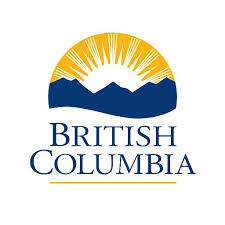XLS
Type of resources
Available actions
Topics
Keywords
Contact for the resource
Provided by
Formats
Representation types
Update frequencies
status
-

Stormwater ponds are artificial structures that are critical components of stormwater management systems in many Canadian cities. They serve to prevent flooding of urban areas during excess rainfall. Stormwater ponds also contribute to environmental health by allowing the settlement of dirt and solids from stormwater to the bottom of the pond. As a result, the sediments of stormwater ponds can become enriched with potentially harmful contaminants. The health risks posed to anglers by contact with stormwater and sediments and consumption of fish from stormwater ponds are not well characterized. The City of Lacombe (Alberta) is a municipality with two stormwater ponds stocked with sterile fish for angling. Alberta Health collected water, sediment and fish from these two ponds over two seasons (fall 2010 and spring 2011) and analyzed the samples for a suite of contaminants. Water samples were collected from three sites at each pond and three depths for each site (n=40; nine samples plus one replicate sample per pond per season). Sediment samples were collected from the same three sites at each pond (n=12; three samples per pond per season). Fish samples (rainbow trout) were collected in fall 2010 (n=18; eight from East Pond and ten from Len Thompson Pond). For the contaminant analysis, all samples (water, sediment and fish) were tested for parent and alkylated polycyclic aromatic hydrocarbons (PAHs). Additionally, water samples were tested for routine chemicals, trace metals, pesticides and volatile organic compounds (VOCs), and fish muscle tissue was tested for total mercury.
-

A generalized summary of postal code data, of Canadian purchases of overnight camping permits for use at Ontario Parks. Includes a summary by country for non-Canadians. The data is specific to camping permits purchased through the camper registration system. Total counts are expressed in associated Forward Sortation Areas (FSAs). *[FSA]: Forward Sortation Areas
-

Hourly data collected by Alberta Environment and Parks using Beta-attenuation Particulate Monitors (EBAMs) as part of emergency response monitoring during the 2016 Horse River Wildfire.
-

Generalized postal code data of Outdoor Cards purchasers, including non- residents of the province. Outdoor Cards are required to hunt and fish within the Province of Ontario. [Learn more about Outdoors Cards](https://www.ontario.ca/page/get-outdoors-card)
-

Total visitor spending in Ontario grouped by selected U.S. regions. ## Related * [Inbound visitor spending](/dataset/inbound-visitor-spending) * [Inbound visits by country](/dataset/inbound-visits-by-country) * [Inbound visitor spending by country](/dataset/inbound-visitor-spending-by-country) * [Inbound visits](/dataset/inbound-visits) * [Inbound Visits by U.S. State](/dataset/inbound-visits-by-us-state) *[U.S.]: United States
-

This dataset provides a listing and relevant details for forest resource processing facilities (mills) that are licensed and operating or require a licence to operate in Ontario. Contents include: * Facility Code * Name * Facility Type * MNRF Region * Address * City * Province * Postal Code * Latitudinal and Longitudinal Coordinates All facilities that use 1,000 cubic metres or more of forest resources in one year require a facility licence.
-

Number of outbound visits by residents of Ontario to selected US States. ## Related * [Outbound visits](/dataset/outbound-visits) * [Outbound visitor spending](/dataset/outbound-visitor-spending) * [Outbound visitor spending by province](/dataset/outbound-visitor-spending-by-province) * [Outbound visitor spending by country](/dataset/outbound-visitor-spending-by-country) * [Outbound visits by province](/dataset/outbound-visits-by-province) * [Outbound visits by country](/dataset/outbound-visits-by-country) * [Outbound visitor spending by U.S. state](/dataset/outbound-visitor-spending-by-us-state) *[U.S.]: United States *[US]: United States
-

Total visitor spending in Ontario grouped by the main origins (Ontario, other Canada, US, and overseas). ## Related * [Inbound visits by country](/dataset/inbound-visits-by-country) * [Inbound visitor spending by country](/dataset/inbound-visitor-spending-by-country) * [Inbound visits](/dataset/inbound-visits) * [Inbound Visits by U.S. State](/dataset/inbound-visits-by-us-state) * [Inbound visitor spending by U.S. state](/dataset/inbound-visitor-spending-by-us-state) *[U.S.]: United States *[US]: United States
-

Concordance file showing which Census Subdivision a particular Township land parcel is in. Also has geo-coordinate for CSD centre. For general use purposes, as some inaccuracies may exist.
-

Stream water samples are collected as part of the Regional Geochemical Survey (RGS) program, which covers over 80% of British Columbia. An additional 4332 stream and lake water samples were analyzed by ICP-MS, ICP-ES and other methods for trace and minor elements in NTS map areas 082M, 093C/D/F/K/L/M, 094L/M, 103A, 104A/H/J/P. The data provides the elements found in the water sample as well as the test method, the detection limit and the original source. The data is available for download and viewing at the BC Geological Survey website.
 Arctic SDI catalogue
Arctic SDI catalogue